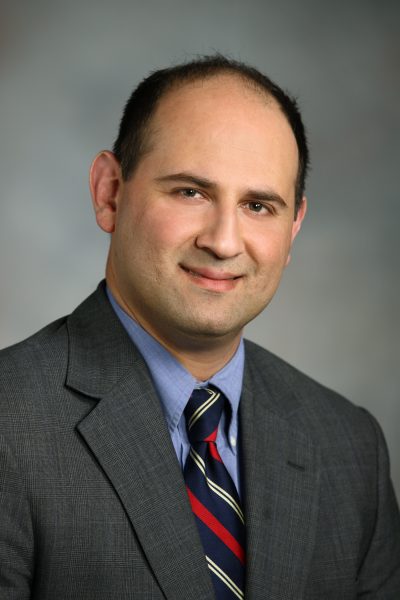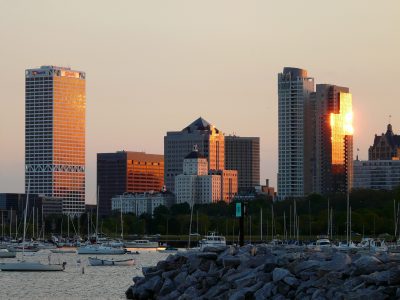Healthcare
In the coming years, as our country’s 76.4 million baby boomers enter their elderly years, our country’s healthcare system will face unprecedented demand, adding jobs faster than any other segment of our economy. Yet, employers are already finding that there are not enough unemployed healthcare workers to fill vacant positions, and in some rural areas, shortages are particularly acute.
For several reasons, immigrants have been a particularly important stopgap filling some of our most glaring healthcare needs. Immigrants are twice as likely as native-born to fill lesser skilled home health aide positions, but also twice as likely to fill high-skilled positions as physicians and surgeons. And because immigrants tend to be more willing to move for a job than the native-born, and there are visa provisions to encourage this, immigrants also fill doctor vacancies in some of our rural communities with the greatest need. A smarter immigration system, however, could help fill far more gaps in our healthcare system, benefiting patients.

Dr. Miriam Perez: Cleveland Clinic Depends on Immigrants to be World Leader in Medicine
Twenty-five years ago, Dr. Miriam Perez moved from her native Colombia to the United States to study neurosurgery. Then, 29 weeks after getting pregnant, she went into premature labor. “At that time, survival without real complications was unheard of,” she says. But after two months in intensive care, her son… Read More

U.S. Policy Asks Foreign Doctor to Serve Rural America but Won’t Let Her Husband Work
Johanne Personna-Policard loves her job as a neurologist. It’s rewarding, even during the one week a month that she’s on call, when she fields middle-of-the-night phone calls that send her racing out the door. She finds some patients on the brink of death, and her quick care—an injection of clot… Read More

This Venezuelan-Born Chemical Engineer Explains Why Immigration Reform Could Help Cure Cancer
There’s one central reason that Agustin Lopez Marquez, a chemical engineer, was able to pioneer what Scientific American has called a “world changing” idea: The United States let him in. “In Venezuela, chemical engineers are often constrained to the energy industry,” he says. “It was only when I… Read More

Immigration System Stands Between Doctor and Co-Founder of Revolutionary Health Technology and His Company
Platelets, the smallest of our blood cells, are critical to our survival. Key to wound healing, they stop us from bleeding out when we get a cut and are used in medical procedures ranging from surgery to cancer treatment. “Platelets are the Band-Aids of the bloodstream,” explains Argentine native Dr. Read More

Congress must let foreign doctors serve America’s rural communities
Across America, foreign-born doctors are providing medical care in some of the country’s most underserved communities: small, rural counties that have only 82 doctors for every 100,000 residents, less than half the number available in urban areas. This is possible, in large part, because of the… Read More

Pakistani Surgeon Fills Key Medical Gap in North Dakota
Before Dr. Syed Osman Ali arrived in Grand Forks, North Dakota, many patients in this state needing complex thoracic surgery or even urgent cardiac surgery would make a 400-mile trek to the Mayo Clinic in neighboring Minnesota for their care. The hospital in Grand Forks had operating equipment; what… Read More

Immigrants in Wisconsin, Site of Tonight’s GOP Debate
Tonight, the Republican candidates will face off for the fourth GOP presidential debate (#GOPDebate) in Milwaukee, Wisconsin. Ahead of the debate, here are a few facts about Wisconsin’s immigrant population. While the state’s immigrant community is relatively small — just 4.6 percent of the state’s population is foreign-born… Read More

Immigrants Can Mitigate Home Health Aide Shortages in Rural America, New Report Shows
Immigrants Can Mitigate Home Health Aide Shortages in Rural America, New Report Shows New York, NY — By 2030, America’s population of seniors will reach 71.5 million — a two-fold increase from 2000. As this demographic shift unfolds, healthcare services will be in increasingly high demand. A new… Read More

America’s Rural Counties Face Dire Shortages of Physicians; Foreign-born Doctors Can Help, Report Shows
CONTACT Sarah Doolin: [email protected] New York, NY — Today marks the expiration of the Conrad 30 Waiver program, which permits each state’s Department of Health to sponsor up to thirty foreign physicians to work in underserved areas and waives the J-1 visa… Read More

Immigration Reform Would Alleviate America’s Aging Crisis, New Research Briefs Show
FOR IMMEDIATE RELEASE August 21, 2015 CONTACTS: Sarah Doolin, [email protected] IMMIGRATION REFORM WOULD ALLEVIATE AMERICA’S AGING CRISIS, NEW RESEARCH BRIEFS SHOW New York, NY—To mark Senior Citizens Day, which honors the elderly and their role in American life, the … Read More
Help Wanted
In all 50 states, there are already far more healthcare jobs open than there are workers available to fill them. Many policymakers worry that extreme demands on the healthcare system are coming at a time when many parts of the country still lack enough physicians and healthcare providers to offer adequate—or even basic—levels of care.
Healthcare Jobs Advertised for Each Unemployed Health Worker, 2013
Rural Provider Shortages
Rural communities, in many ways, feel healthcare worker shortages most acutely. Rural counties, on average, have far fewer doctors or home health aides per capita than more urban ones. But their healthcare needs are often greater—particularly given their older populations and higher rates of disability. Foreign-born physicians, who are often more willing to relocate than native-born colleagues, are a valuable resource for these medically underserved areas.
Indicators of Health Demand, Metro vs. Nonmetro Areas, 2014
Ratio of Providers to Population in Different County Types, 2014
The Role of Immigrants
In many health occupations, from surgeons to home health aides, immigrants already make up a large share of active workers. As the U.S. population continues to age and as healthcare demands increase, immigrants are expected to play an increasingly important role in the health of the nation.
Top Healthcare Jobs by Share of Foreign-Born Workers, 2018
Aging Baby Boomers
The 76.4 million baby boomers living in America represent a major challenge to our broader healthcare system. Baby boomers are expected to live longer than past generations, while also battling chronic, longstanding conditions. If caregivers remain scarce in some parts of the country, adult children could drop out of the labor force in large numbers to care for aging parents—a potential setback for the economy overall.
Sources:
2 Wan He et al., “65+ in the United States: 2005,” Current Population Reports: Special Studies (U.S. Department of Health and Human Services, National Institute of Aging and U.S. Census Bureau, December 2005). Available online.; Carrie A. Werner, “The Older Population: 2010,” 2010 Census Briefs, November 2011. Available online.
3 Keehan, Sean P, Helen C. Lazenby, Mark A. Zezza, and Aaron S. Catlin, “Age Estimates in the National Health Accounts,” Health Care Financing Review 2, no. 2 (2003). Web Exclusive.
4MetLife, “Caregiving Costs to Working Caregivers: Double Jeopardy for Baby Boomers Caring for Their Parents,” June 2011. Available online.
Size of U.S. Population, Age 65+
Home Health Aides
As the share of the U.S. population over 65 continues to increase, demand for home health aides is expected to soar. But the U.S.-born workers who typically fill such jobs—working age women with less than a bachelor’s degree—is shrinking. Immigrants are already playing an outsized role as home health aides, and can help address our country’s growing needs for such workers in the future.
Psychiatrists
An estimated one in five Americans experiences a mental health issue each year, yet more than 40 percent never receive care.5 One reason why so many individuals go untreated and undiagnosed: The country’s large and growing shortage of mental health professionals, an issue that is particularly acute in America’s rural communities. While immigrants already play a large role in our psychiatry workforce, more could be done to leverage their training and skills.
Sources:
5 Pamela S. Hyde and Paolo Del Vecchio, “Five Point Plan to Improve the Nation’s Mental Health,” Substance Abuse and Mental Health Services Administration, n.d. Available online.; Patrick W. Corrigan, Benjamin G. Druss, and Deborah A. Perlick, “The Impact of Mental Illness Stigma on Seeking and Participating in Mental Health Care,” Association for Psychological Science, August 1, 2014. Available online.
States with the Most Days of Decreased or Compromised Worker Productivity Due to Inadequate Mental Healthcare
Visa Obstacles
Despite the critical role immigrants play in the healthcare workforce, the U.S. immigration system makes it difficult for employers to recruit immigrants, even when no U.S.-born workers are available. Many foreign medical residents who study in the United States come on the J-1 visa, a visa that requires them to return home for at least two years after completing their training. One program, The Conrad 30 Waiver, allows states to waive this return requirement for foreign medical residents willing to take jobs in underserved areas. The program, however, is far too limited to meet current needs. Expanding the Conrad 30 program and exploring other fixes—like offering a dedicated temporary work visa to health workers—would go a long way towards addressing our healthcare labor force challenges. So would streamlining the relicensing process for some foreign-trained doctors already here.
Sources:
6 José Ramón Fernández-Peña, Founder and Director of Welcome Back Initiative, August 2015.
7 Ibid.
Make a contribution
Make a direct impact on the lives of immigrants.
